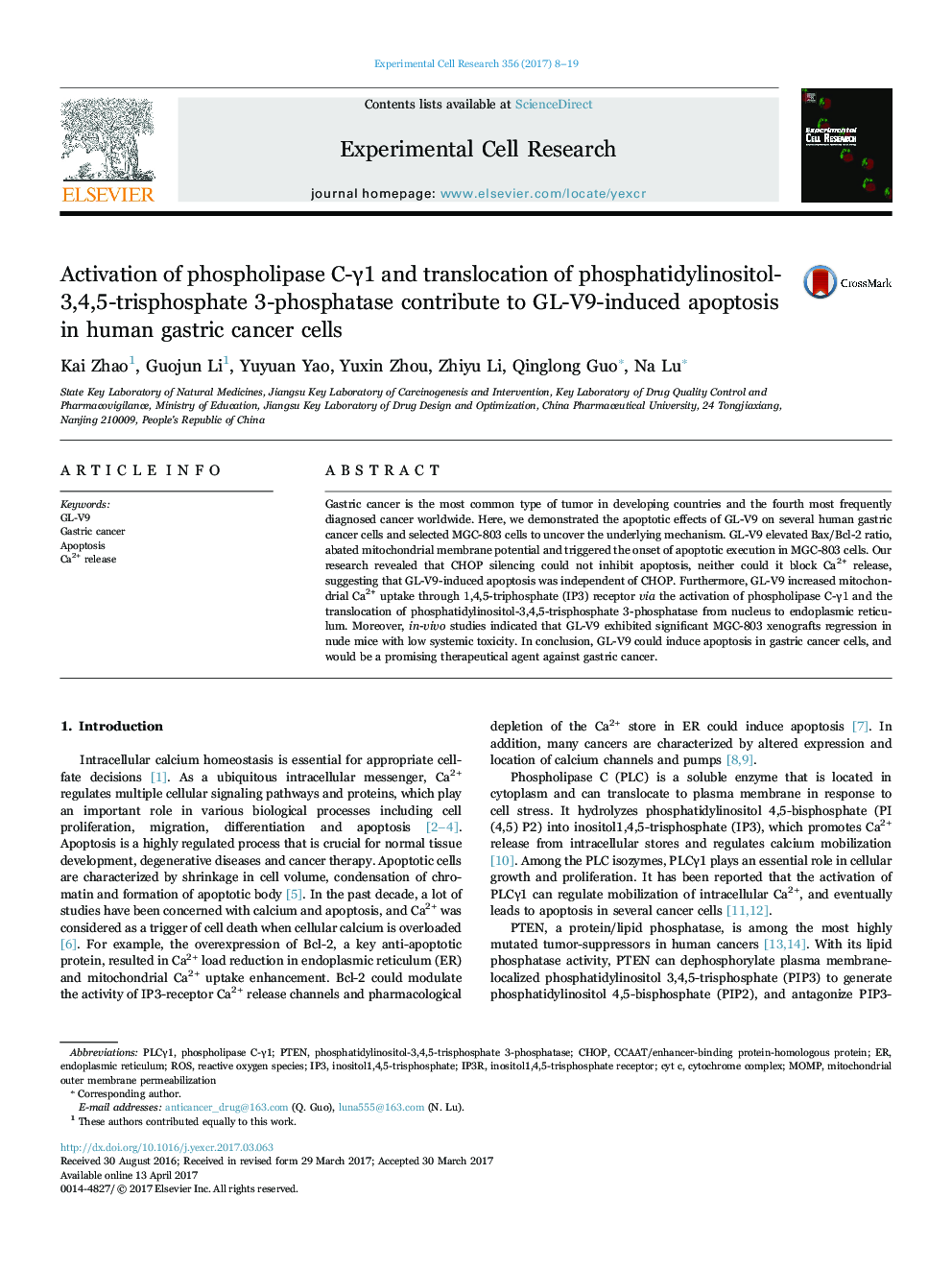| Article ID | Journal | Published Year | Pages | File Type |
|---|---|---|---|---|
| 5526951 | Experimental Cell Research | 2017 | 12 Pages |
â¢GL-V9 induces apoptosis in a Ca2+-dependent manner in human cancer cell lines.â¢PLCγ1 activation and ER-localized PTEN is involved in GL-V9 induced Ca2+ remobilization.â¢ER stress occurs under GL-V9 treatment, but is unrelated to GL-V9 induced apoptosis.â¢GL-V9 exhibits high anticancer effects and low toxicity in vivo experiments.
Gastric cancer is the most common type of tumor in developing countries and the fourth most frequently diagnosed cancer worldwide. Here, we demonstrated the apoptotic effects of GL-V9 on several human gastric cancer cells and selected MGC-803 cells to uncover the underlying mechanism. GL-V9 elevated Bax/Bcl-2 ratio, abated mitochondrial membrane potential and triggered the onset of apoptotic execution in MGC-803 cells. Our research revealed that CHOP silencing could not inhibit apoptosis, neither could it block Ca2+ release, suggesting that GL-V9-induced apoptosis was independent of CHOP. Furthermore, GL-V9 increased mitochondrial Ca2+ uptake through 1,4,5-triphosphate (IP3) receptor via the activation of phospholipase C-γ1 and the translocation of phosphatidylinositol-3,4,5-trisphosphate 3-phosphatase from nucleus to endoplasmic reticulum. Moreover, in-vivo studies indicated that GL-V9 exhibited significant MGC-803 xenografts regression in nude mice with low systemic toxicity. In conclusion, GL-V9 could induce apoptosis in gastric cancer cells, and would be a promising therapeutical agent against gastric cancer.
Graphical abstractDownload high-res image (276KB)Download full-size image
